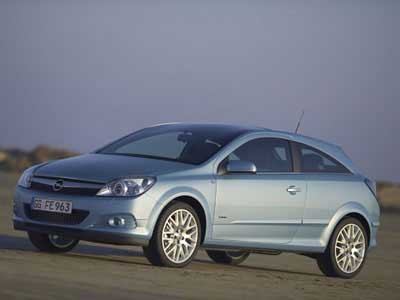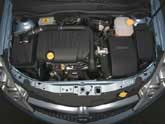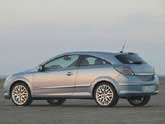Recent Articles
Popular Makes
Body Types
Opel Astra Diesel Hybrid Concept
Diesel Power is Ready for Prime Time

Scalability is critical when it comes to making new technology affordable for the average consumer. Take the new two-mode full hybrid system, developed by General Motors and DaimlerChrysler. As both automakers pour money, time, and effort into fuel-cell technologies that are still at least a decade away from production, it is clear to these corporate giants that a mid-term solution to the twin problems of fuel consumption and emissions reduction is necessary, and it’s necessary now. Not only is a solution necessary now, but also it must be scalable. In other words, the technology must be flexible to enough to work with big vehicles and small, gasoline and diesel internal combustion engines, and in a variety of world markets. Scalable technology becomes affordable technology, and unless the new GM/DC collaboration called the two-mode full hybrid system is affordable, few consumers will accept it or, most importantly, buy it. First developed for vehicles that consume the most fuel and spew the most pollution into the air such as diesel-powered buses, the two-mode full hybrid system is scalable enough to be used in everything from midsize SUVs to small cars, is compatible with both diesel and gasoline engines, and can be paired with front-, rear- or all-wheel drive.
Powertrain
To prove that the two-mode full hybrid system is viable for small cars, GM installed a diesel-powered version in an Opel Astra GTC Coupe. In this application, the two-mode hybrid system is equipped with a 125-horsepower, 1.7-liter CDTI diesel engine mated to twin electric motors, one generating 30kw of power and the other 40kw. The Opel Astra GTC Coupe is sold in Europe, and not in North America. In terms of packaging, the two-mode full hybrid system does not compromise comfort or utility, according to GM. In the Opel Astra Diesel Hybrid Concept, the nickel metal-hydride battery pack is located in the spare tire well to ensure cargo carrying capacity, and since the hybrid system is no larger than a transmission, it is easy to package under the car with the rest of the mechanicals. Able to run solely on electric power, the Opel Astra Diesel Hybrid Concept will nonetheless accelerate to 60 mph in little more than 7.5 seconds when working in conjunction with the diesel engine, proving yet again that performance and economy are not mutually exclusive concepts when it comes to hybrid vehicles.

Fuel Efficient
Compared to production Astra diesels, the Astra Diesel Hybrid Concept is 25 percent more fuel-efficient. Not only does this make the car less expensive to operate, but it also cuts down on carbon-dioxide emissions per mile traveled, making it cleaner that a regular diesel vehicle. Changes between a production Astra GTC and this Diesel Hybrid Concept are few. The gauge cluster displays information about the hybrid system, the spare tire well is stuffed full of battery packs, and a special badge on the outside identifies the car as a hybrid. Based on press information, it would appear that General Motors is well on its way to resolving problems associated with fuel consumption, fuel economy, and powertrain emissions. The two-mode full hybrid system is slated to debut on the 2007 Chevrolet Tahoe and GMC Yukon, with other vehicles receiving the technology thereafter. Photos courtesy of General Motors
